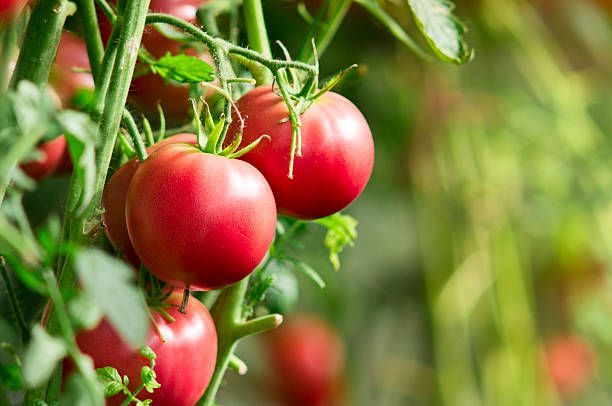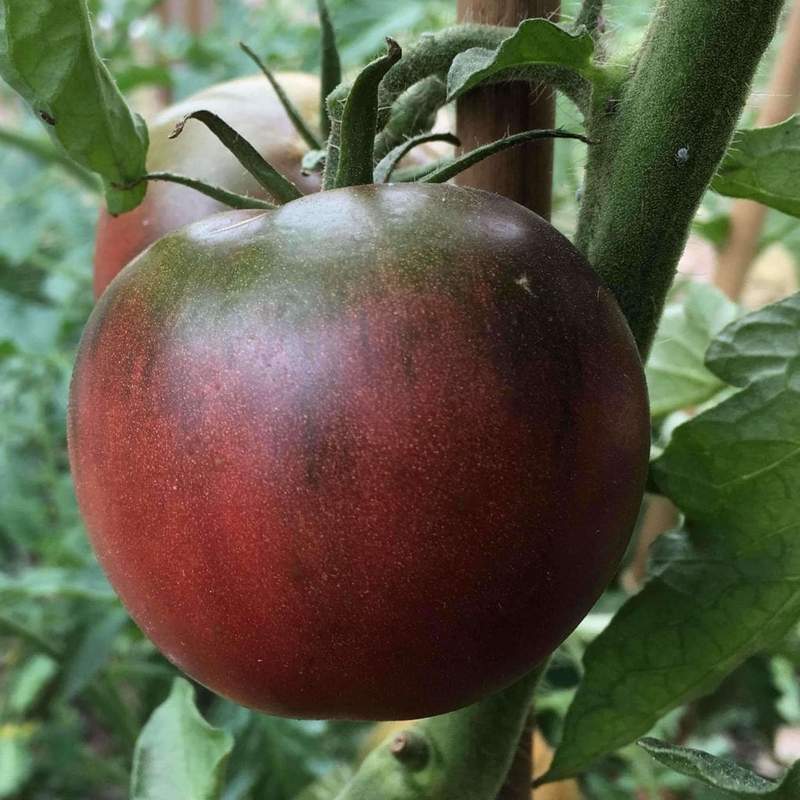Seed Saving Blog

Tomato Love
Valentine’s Day is approaching. In the warmer regions of Arizona (like Phoenix, where I garden) February 14th is also Tomato Day. My fellow low desert gardeners plant their tomatoes close to this date, much earlier than growers in cooler climates. While they are on my mind, I want to share my approach to preparation and cultivation for growers in other parts of the country who may still be in the planning stages.
Tomatoes grow well in Phoenix, but we have a few pests and pathogens to which they are susceptible. Unfortunately, tomato diseases are hard to fight with natural remedies once they manifest. Since I choose not to use toxic chemicals as a treatment option, prevention is the best defense against contagion. The good news is that simple management practices are generally effective at keeping full-blown infections at bay.
If you start to pinpoint any particular symptoms that may show up on your plants, Clemson Cooperative Extension has published a helpful guide to tomato diseases and disorders. You can access it here and keep it handy . The guide includes prevention tips and natural treatments for many tomato problems. Note that the article suggests using chemical fungicides, and suggests some organic options. I do not use fungicides of any sort, other than homemade, but I find the rest of the information to be helpful.
It is useful to know natural treatments for disease and pest problems. However, the key to keeping tomato plants healthy and productive is to act before there is any indication of trouble. The following are measures to take to encourage strong, healthy growth.
Disease Prevention Starts Prior to Planting. Good garden preparation can ward off trouble early. Remove weeds and debris that may be hiding pests. Prep the soil with compost and make sure that your irrigation system is in good condition. Clean tomato cages, trellises and tools with alcohol or 10% bleach solution.
Select Disease Resistant Varieties. If you have had disease problems in the past, choose varieties that are resistant to the particular pathogens that are active in your garden. Many hybrids are resistant, and some heirlooms also have evolved counteractions to ward off contamination. Tomato Dirt has a helpful guide to choosing disease resistant tomatoes.
Space Your Plantings. Plant seedlings with plenty of space between them for good airflow. This will mitigate many fungal diseases. Trellising and caging keeps the fruit off the soil where the disease spores linger. Additionally, prune out excess growth to increase ventilation. Pruning also decreases stress on the plants and encourages strong, healthy growth. When fruit starts to develop, prune out barren vines.
Rotate Plantings. Move tomatoes around the garden to throw off pests and diseases. A three-year rotation is recommended, growing tomatoes the first year in a spot and growing something else in that spot for the next two years. Move tomatoes annually as far as you can from their previous location. Here is what to do if you don’t have the space to rotate crops more than a few feet.
Irrigate Properly. Water only when the top three inches of soil become dry and try to keep moisture levels as even as possible. Overwatering or an irregular watering schedule can encourage cracking and disease. Water at ground level, keeping leaves as dry as possible. Fungal disease spread when plants are wet and when water splashes spores from plant to plant or from the ground onto the leaves.
Mulch. Mulch is recommended to protect soil and feed microbes. But it also has a specific purpose for preventing fungal diseases. According to Modern Farmer, fungal spores overwinter in the soil and the main way they get onto the plants is when raindrops hit the ground and splash dirty water onto the foliage. From there, blight spreads up through the plant whenever conditions are sufficiently moist. Mulching helps by covering the fungal spores. Mulching also conserves moisture in the soil, so you don’t have to water as much. Straw or dried leaves are good choices for mulching tomatoes.
Clip Off Infected Leaves and Stems As soon as you see any deformed leaves or spots, remove them quickly before the problem spreads. Dispose of these clippings far away from your garden and sanitize your tools and gloves so that you don’t reintroduce the pathogen next time you use them. Rubbing alcohol or a 10% bleach solution will do the job.
Fertilize. Tomatoes are heavy feeders. They need nutritional support and are more prone to disease when nutrients are imbalanced. Fertilize at planting, using a balanced organic fertilizer that feeds the soil as well as the plant. Healthy soil supports microbes that help to crowd out pathogens and they serve to make nutrients more available to plant roots. Once fruit as set, apply an organic phosphorus fertilizer every other week. Avoid over-fertilizing, as too much phosphorus can impede calcium absorption (a key nutrient to prevent blossom-end rot.) My personal regimen is to place alfalfa pellets, eggshells and banana peels in my planting holes. When fruit sets, I side dress with dry organic fertilizer.
Control Insect Pests. Insect pests spread pathogens as they crawl on plants and their activity can weaken plant resistance to disease. If signs appear of insect damage, check the stems and both sides of the leaves to identify the pest. Here is a helpful guide to identifying and controlling pests (note the article recommends applying chemical insecticides for persistent infestations, which I don’t recommend, even as a last resort.)
Keep It Tidy. Garden clean-up is another preventative key. Clean up debris and pull weeds throughout the growing season. When the season winds down, remove dead and dying annuals. Disease spores can overwinter on plants left in the garden from the previous year. Haul weeds and debris to the compost pile. Dress the ground with fresh mulch to protect soil and feed healthy microbes over the winter.
Inspect Regularly and Act Swiftly. Most tomato diseases cannot be stopped once you spot them. So quick action is necessary. I have found that repeated treatments with a slurry of spoiled milk or a baking soda spray can help to abate fungal infestations. To make the spray, add a heaping tablespoon of baking soda, a teaspoon of vegetable oil, and a few drops of mild soap to a gallon of water. Lightly spray tomato plants with this solution or a milk slurry, but do so lightly so that leaves are not dripping wet and can dry quickly.
Be Willing to Cull. On occasions when disease becomes advanced, I do not hesitate to remove and dispose of stricken plants. It may be difficult to give up, but sacrificing sick plants can save the rest of the garden.
 The Great American Seed Up carries a handful of beautiful tomato varieties as part of our bundles. View them here. Pictured here is Black from Tula (Indeterminate) Solanum lycopersicum. One of the largest of the black tomatoes. Dark brown, purple fruits with slightly salty, smoky flavor. Probably from Ukraine. Matures in 80 days. Available while supplies last.
The Great American Seed Up carries a handful of beautiful tomato varieties as part of our bundles. View them here. Pictured here is Black from Tula (Indeterminate) Solanum lycopersicum. One of the largest of the black tomatoes. Dark brown, purple fruits with slightly salty, smoky flavor. Probably from Ukraine. Matures in 80 days. Available while supplies last.
Recent Posts
- 2023 SEED LIST – Phoenix Seed Up Event October 27-28
- Seed Resources: Navigating the Abundance of Knowledge
- Seed List for the Phoenix Seed Up Event November 4-5, 2022
- Your Personal Seed Bank: Doomsday Vault or Your Best Shot at an Abundant Future?
- What is the Great American Seed Up??
- HOME GARDENERS FACE SEED SHORTAGES
- What In the World is Happening with Grain?
- Grains in Gardens & Other Skills to Learn & Share
